Guru Nanak Jayanti Wishes, Quotes, and Messages to Share
Celebrate Guru Nanak Jayanti 2025 with inspiring wishes, quotes, and messages that reflect the divine teachings of Guru Nanak Dev Ji.
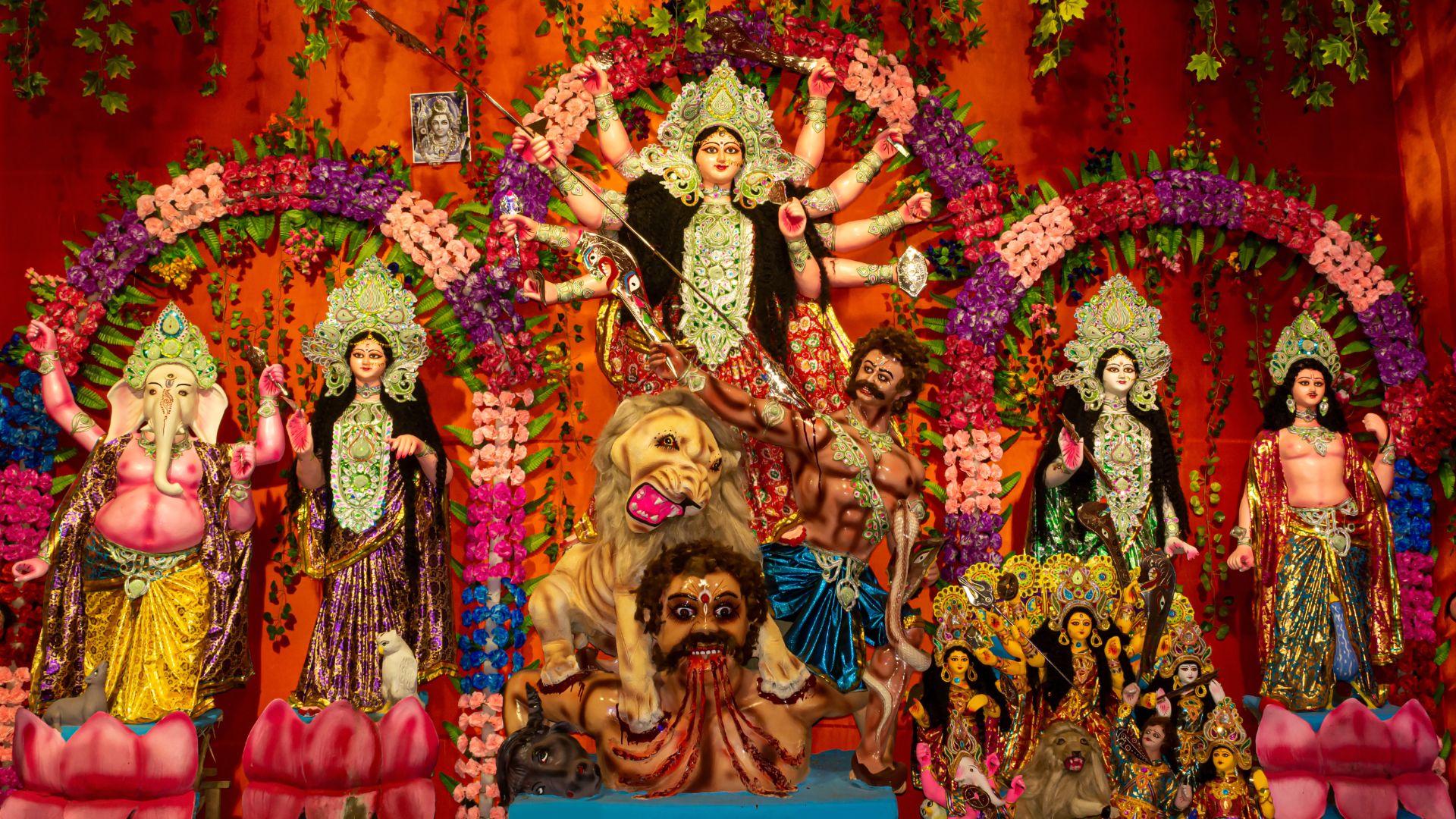
Durga puja is an important festival in the Hindu religion. Celebrated with great fervour, pomp and show in North India, it takes various forms across different states as one moves from west to east. The Durga Puja as per the Hindu stories and legends marks the end of demon Mahishasura. Lets take a deep dive into the story and traditions of Durga puja or Pujo as per Bengali traditions.
Mahishasura, the buffalo demon was powerful and deceitful. He achieved near-immortality through intense tapa (penance) to Lord Brahma, gaining a boon that rendered him unconquerable by any man or god. While taking his choicest boon from Lord Brahma he excluded women thinking them to be powerless and beneath men in their strength. He thought himself to be invincible. With his new found powers he waged war against the devas (gods) and succeeded in defeating them gaining control of the Swarg (celestial abode, heaven).
The gods, powerless in front of the asura, prayed to the trideva (trio of three gods, Lord Vishnu, Lord Shiva and Lord Brahma) to provide them with a solution and end the atrocities of the demon. The three lords combined their divine energies along with the energies of Goddess Parvati, Goddess Lakshmi and Goddess Saraswati (their divine consorts) and from them was born the divine and radiant Shakti, goddess Durga. She was born with ten arms, each bearing a different weapon from trident to a chakra.
Goddess Durga’s birth followed a nine-day fierce battle with Mahishasura. Demon Mahishasura tried to deceive the goddess by shape-shifting into various forms including a lion, an elephant and a buffalo. The end to this cosmic battle happened on the tenth day when Maa Durga, riding on her lion, confronted the demon and beheaded him with her trident and a chakra. From that day on Maa Durga is also called Mahishasuramardini or ‘The Slayer of Mahishasura’.
The festival of Durga Puja is celebrated as a reaffirmation of triumph of good over evil, virtue over arrogance and knowledge over ignorance. The Goddess Durga is a personification of the divine female energy which is righteous and powerful. It holds the power to restore Dharma (cosmic order) when threatened by the chaotic and destructive forces.
The official beginning of the Durga Puja does not start at the arrival of the Goddess's idol at the pandals but on the day of Mahalaya. The day of Mahalaya is also the beginning of Navratri. It is the first day of Navratri post the Pitru Paksha. Thus begins the Devi Paksha, the auspicious fortnight of the goddess.
The most iconic cultural aspect of Mahalaya for the Begalis’ is the pre-dawn radio broadcast of Mahishasura Mardini. For over 90 years, this one-and-a-half-hour audio montage has been a yearly ritual for Bengalis, who awaken at around 4 a.m. to tune in. The program has Devi Mahatmya (Chandi Paath), devotional Bengali songs, and a powerful mythological narration which recounts the story of Durga's creation and her descent to Earth. The iconic and timeless voice of Birendra Krishna Bhadra has remained the centerpiece of the program since 1966 making this broadcast an indispensable part of the cultural fabric of Mahalaya.
By the hindu tradition, each year Goddess Durga arrive on earth in a certain vahana (i.e. vehicle) and departs in a certain vahana. Each year pundits and gurus through various astrological calculations announce these modes of travel that will be used by the Goddess. Each mode of travel has associated with it a profound symbolic meaning and prophecy of the India and earth as a whole.
The choice of vahana is determined by the day of the week on which the festival begins and ends. This year i.e. in 2025, Saptami commences on a Monday, and it is announced the Goddess Durga will arrive in this Prithvi lok (earth) on an Gaja (Elephant). This is considered a highly auspicious sign as an elephant symbolises peace, prosperity, good rainfall, abundance of crops and political stability. Her arrival on earth will benefit all sectors of the society including farmers and businesses.
However, her departure on a Dashami which falls on a Thursday is via a Nauka (Boat). The symbolism attached with this indicated excessive rainfall, floods and other natural calamities. It also signifies a journey of divine guidance and graceful flow of events.
The prophecy this year has been complex and full of contradictions. This dual interpretation also presents a powerful spiritual lesson that all blessings are accompanied by challenges, Just like a coal must go through extreme heat and pressure before it turns into a diamond. Humans must approach the coming year with gratitude for blessings and vigilance against potential difficulties and challenges.
The Durga Puja ceremonies formally start on the day of Maha Shashthi, which in 2025 is Sunday, September 28. This day is spiritually significant as it is when the goddess is believed to arrive on Earth from her celestial abode. The key rituals of Shashthi are Kalparambha and Bodhan.
Kalparambha translates to the beginning of a sacred ritual. It involves the ceremonial installation of a Kalash (Pot) that symbolizes the goddess Durga’s divine presence. This is followed by Bodhan which literally means awakening". Bodhan is the ceremonial invocation of the goddess's spirit into the clay idol, a critical step before the idol worship can start. The day culminates with the public unveiling of the Durga idol's face, a moment filled with excitement and devotion.
Maha Saptami is the first day of the main puja. It begins with the ancient and deeply symbolic ritual of Nabapatrika, or Kola Bou, which translates to ‘banana plant bride’. Each of the nine days of Navratri are dedicated to different form of Goddess Durga. In the Nabapatrika ceremony, nine different plants, each representing a form of the goddess, are bundled together and given a pre-dawn bath in a sacred body of water.
The Kola Bou is symbolically revered as Maa Durga herself and its presence beside the main idol throughout the festival highlights the deep, ancient connection between the goddess and the forces of nature and fertility. The Mahasnan or grand bath ceremony follows the Nabapatrika ritual further purifies the idol and prepares it for the main Saptami puja
Maha Ashtami is the most auspicious day of the festival and is marked by several key rituals. Devotees begin the day by offering Pushpanjali, a tribute of flowers and sing Sanskrit hymns to the goddess. A deeply moving and symbolic ritual called Kumari Puja also takes place on this day. Nine young girls, representing the nine forms of the goddess are worshipped as living incarnations of the divine goddess. This practice is a powerful affirmation of the shakti or feminine power, inherent in every woman.
The tradition of Kumari Puja is common across the Navratri or Durga Puja celebration and are look forward by young girls with excitement. They wait for this auspicious day year long as they are bestowed with gifts, delicious foods and money as well.
The day of Ashtami culminates with the Sandhi Puja. It is the most significant and climactic ritual of the entire festival. This puja is performed at the precise junction (sandhi) of Ashtami and Navami, which is believed to be the exact moment when the goddess Chamunda (one of the nine forms) emerged as a fierce form of Durga to kill the asuras (demons) Chanda and Munda. This ceremony is marked by the lighting of 108 diyas (oil lamps) and an offering of 108 auspicious lotus flowers. The number 108 in hinduism symbolizes spiritual wholeness.
Maha Navami marks the final day of the formal worship rituals. Following the conclusion of the Sandhi Puja, the main Navami puja begins, with the central ritual being the offering of Navami Bhog (food offerings). This grand feast is prepared with devotion and offered to the goddess after which it is distributed to all devotees as prasadam. This practice reinforces the communal nature of the festival, as the sanctified food is shared among all who attend. It symoolizes the collective reception of divine blessings and strengthening the bonds of community.
The ten-day of the festival is Vijayadashami (Thursday, October 2, 2025), a day of triumphant conclusion. The name itself, meaning "the Tenth Day of Victory," celebrates the successful conclusion of Durga's ten-day battle and her victory over Mahishasura.
Across India, this day is known as Dussehra and marks Lord Rama's defeat of the demon king Ravana. In both traditions, the core theme remains the same: the ultimate triumph of good over evil. On this day both the end of Mahishasura and Ravana are celebrated. The day in itself is considered auspicious and holy. Both the asuras were killed on this day just in different eras.
On the morning of Vijayadashami, a vibrant and deeply sentimental Bengali tradition known as Sindoor Khela, or "the vermillion game," takes place. Dressed in the iconic white sari with a red border, married women first bid a ceremonial farewell to the goddess. They perform arati and apply sindoor (vermillion) to the forehead and feet of the Durga idol. Following this, they playfully smear the vermillion on each other's faces and offer sweets, an act symbolizing prayers for long and happy married lives and celebrating the bonds of sisterhood.
This ritual, though rooted in tradition, has also evolved to reflect modern social values. The custom traditionally barred unmarried women and widows from participating. However, in recent years, campaigns have challenged this patriarchal limitation, leading to a more inclusive practice that welcomes all women, regardless of their marital status. This social trend demonstrates that festivals are not static relics of the past but living cultural institutions that can be reinterpreted to promote a more universal understanding of womanhood and the divine feminine.
The final and most solemn act of the festival is Visarjan, the tearful farewell to the goddess. Amidst loud chants, hymns, and the rhythmic beating of drums, the idols are carried in grand processions to a local river or lake where they are immersed. This act symbolizes the deity's departure from the mortal world and her return to her celestial abode.
Beyond its religious significance, Visarjan is also a powerful philosophical statement. The idols, crafted from clay, are intended to dissolve and return to the earth from which they came. This serves as a reminder of the impermanence of all things in the universe and the cyclical nature of life.
It reinforces the belief that everything with a name and a form is subject to dissolution, returning to the "ocean of undifferentiated causality to eventually rise again" in an unending cycle of creation, destruction and recreation.
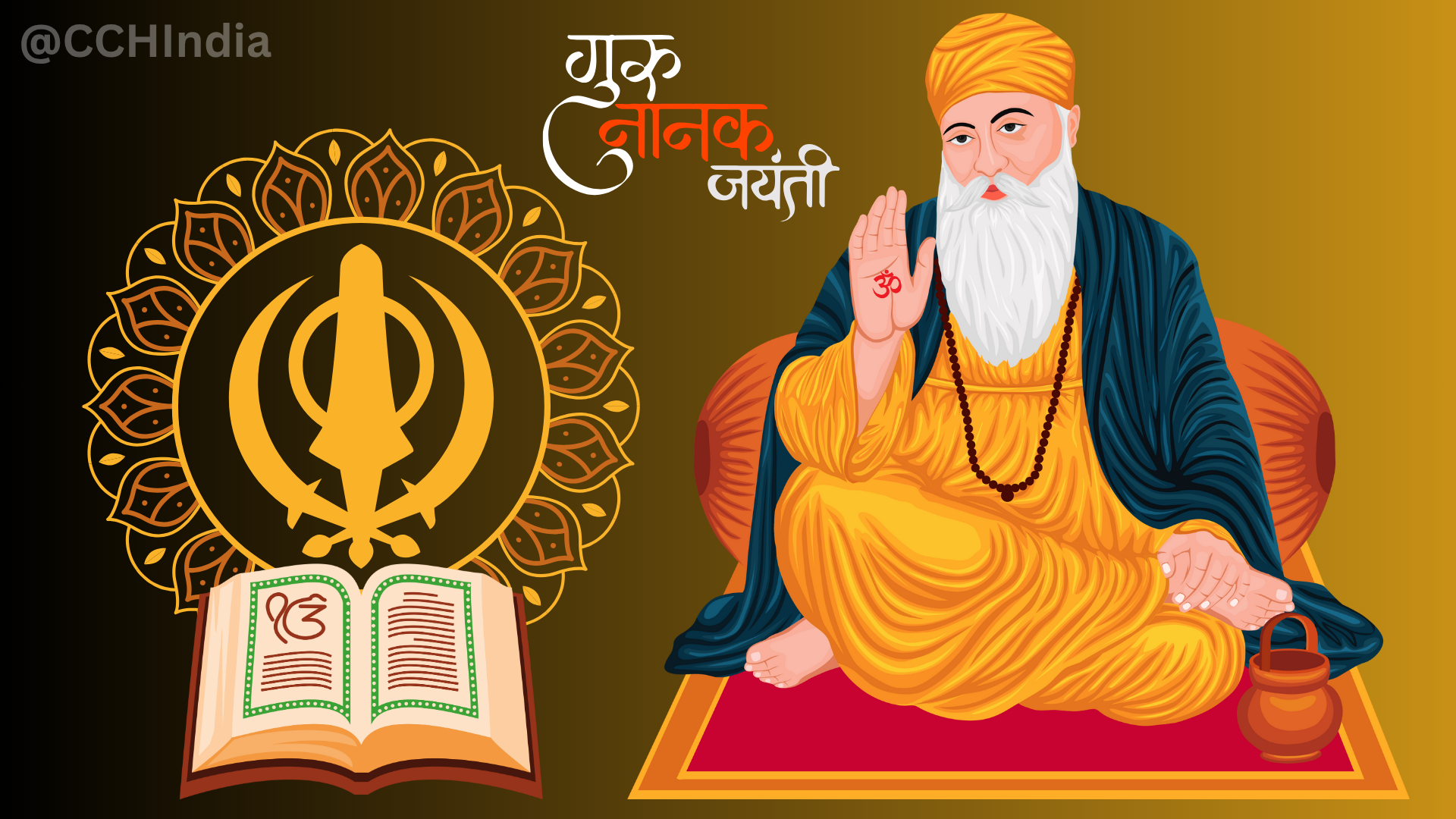
Celebrate Guru Nanak Jayanti 2025 with inspiring wishes, quotes, and messages that reflect the divine teachings of Guru Nanak Dev Ji.
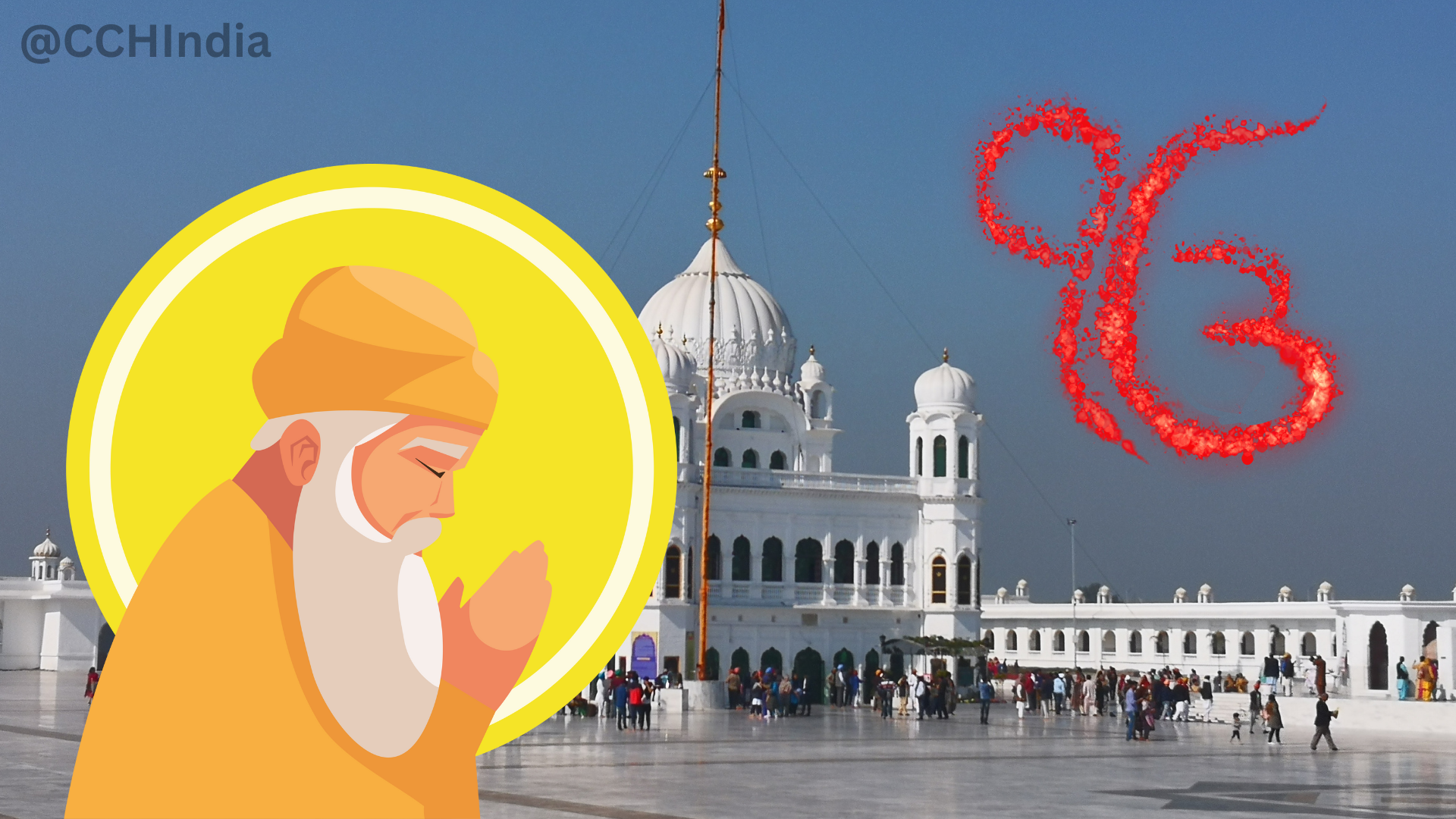
Discover Guru Nanak Dev Ji’s divine journey from Nankana Sahib to Kartarpur, spreading the message of peace, equality, and universal brotherhood.
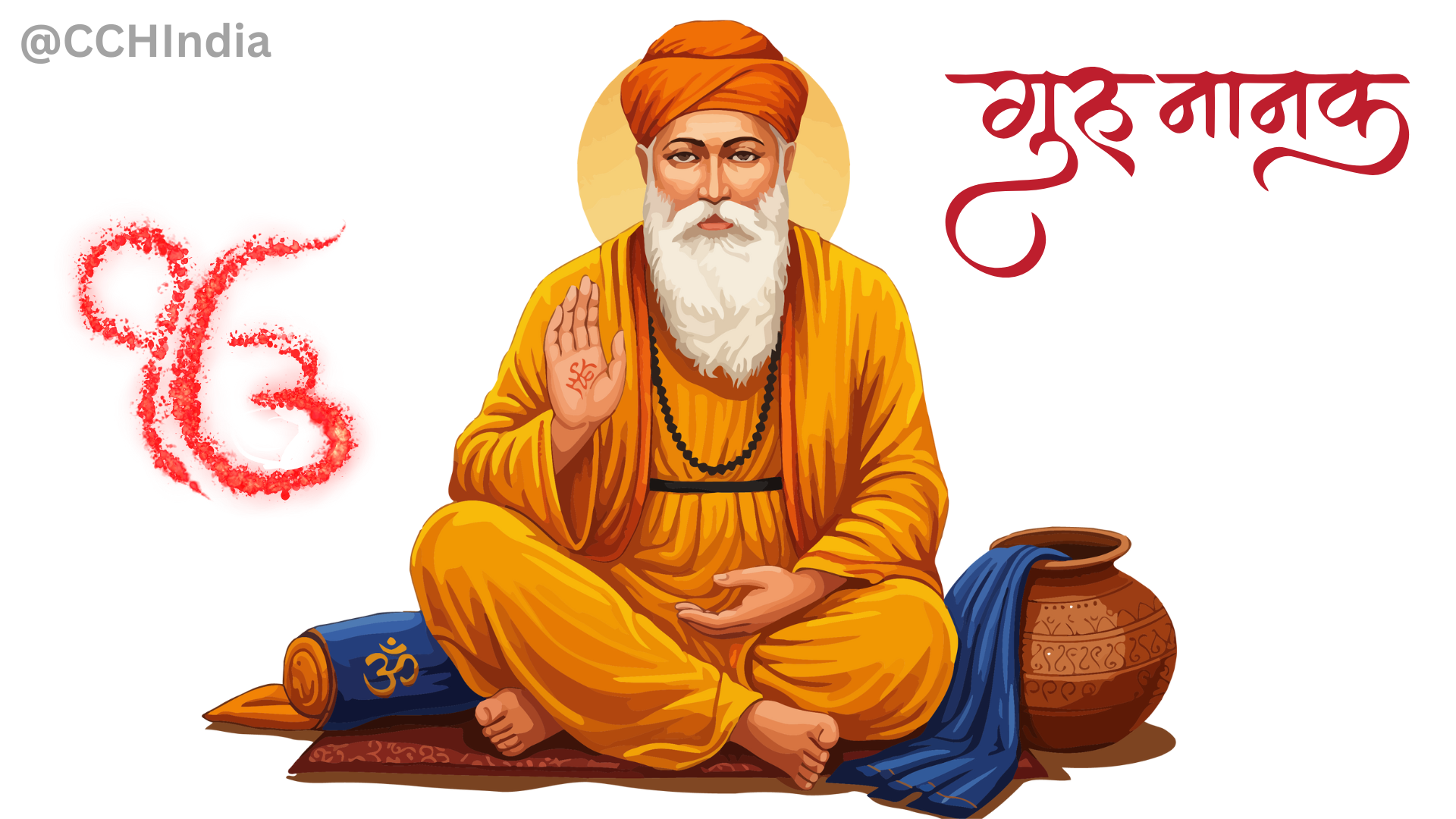
Discover 10 timeless quotes by Guru Nanak Dev Ji that inspire peace, compassion, and oneness. Explore his divine words that continue to guide humanity toward truth and harmony.
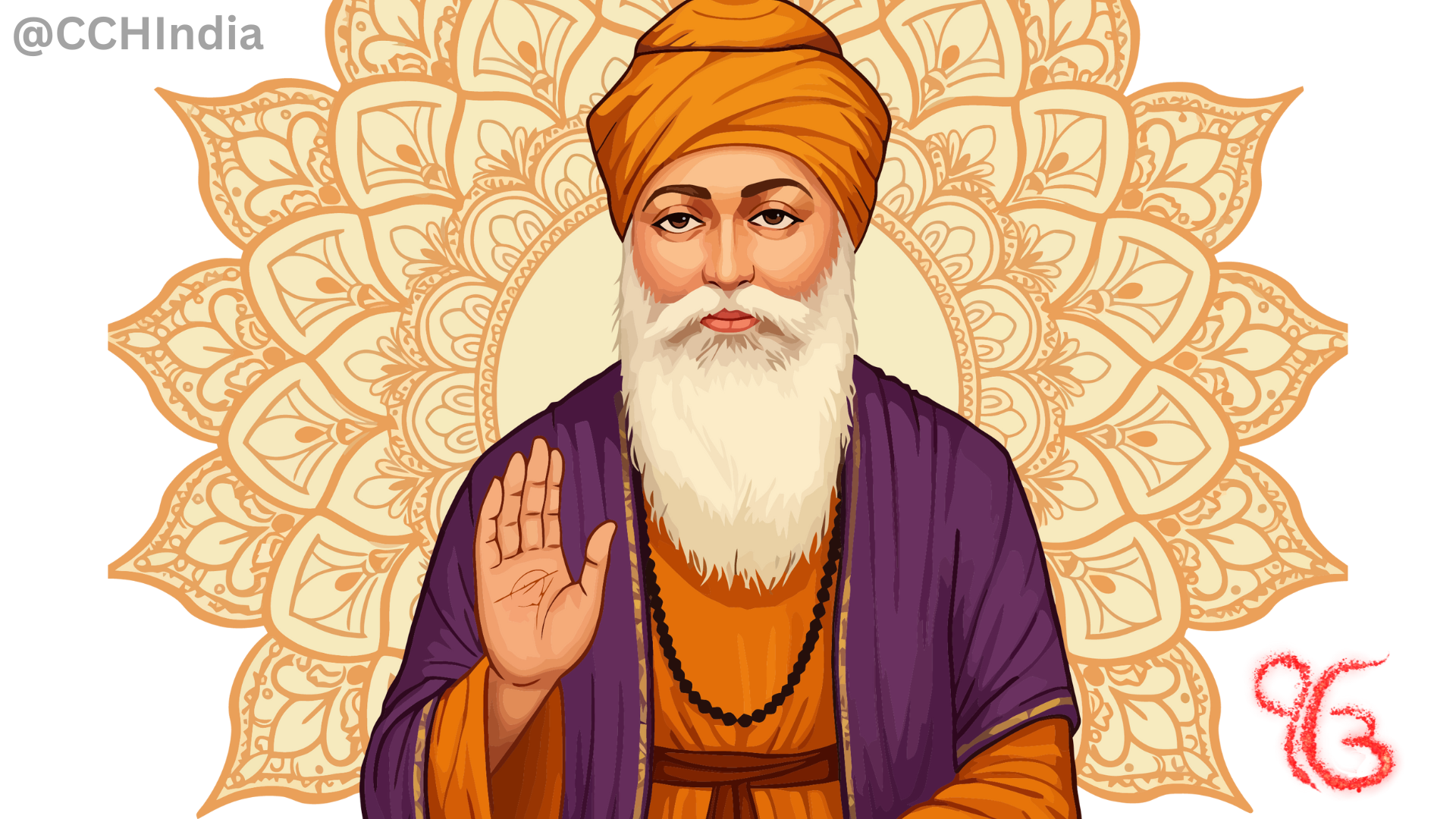
Discover Guru Nanak Dev Ji’s timeless message of Oneness, Equality, and Universal Love. Learn how his teachings of compassion, selfless service, and truth can guide humanity toward peace and unity.

